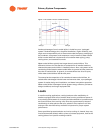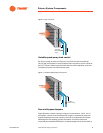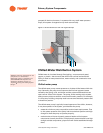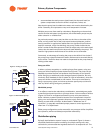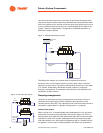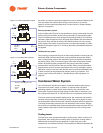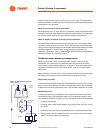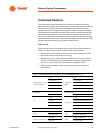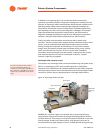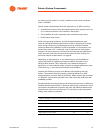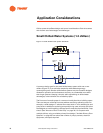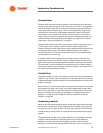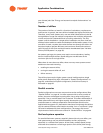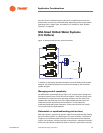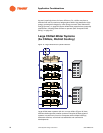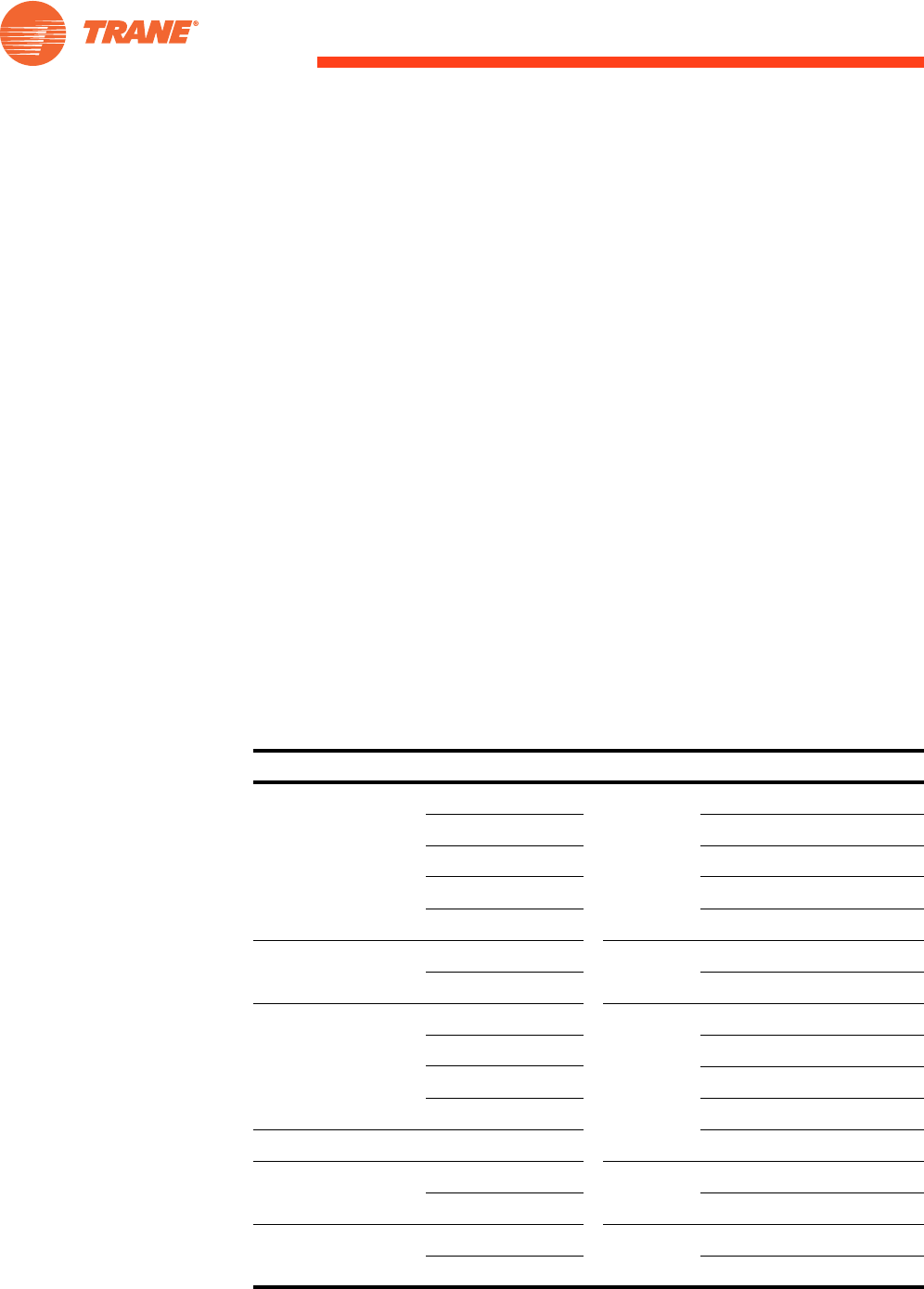
Primary System Components
SYS-APM001-EN Chiller System Design and Control 15
Unit-Level Controls
The chilled-water supply temperature is usually controlled by the chiller.
Most commonly, supply water temperature is used as the sensed variable to
permit control of chiller capacity to meet system load demand. Supply-
temperature control strategies may be used on either constant- or variable-
flow systems. As previously discussed, flow control is executed at the load
terminals using three-way or two-way valves, or separate pumps for each
coil. Control capabilities run the gamut from slow-acting pneumatic controls,
to electromechanical controls, to sophisticated digital controls that use "feed-
forward" algorithms tuned to give superior performance.
Chiller control
Today’s chiller controls are capable of doing more than simply turning the
chiller on and off. At a minimum, these controls should monitor:
• Safety points, such as bearing temperatures and electrical points, that
may cause motor failure when out of range.
• Data points that may cause operational problems if corrective action is
not taken. An example is low chilled-water or refrigerant temperature,
which may result in freezing in or around the evaporator tubes.
• General points to ensure proper chiller performance and refrigerant
containment.
Table 1. Recommended chiller-monitoring points per ASHRAE Standard 147
4
Chilled Water (or other
secondary coolant)
Flow
Condenser
Water
Flow
Inlet Pressure Inlet Pressure
Inlet Temperature Inlet Temperature
Outlet Pressure Outlet Pressure
Outlet Temperature Outlet Temperature
Evaporator
Refrigerant Pressure
Condenser
Refrigerant Pressure
Refrigerant Temp. Refrigerant Temp.
Oil
Level
Refrigerant
Level
Pressure Compressor Discharge Temp.
Temperature Compressor Suction Temp.
Addition of Addition of (in Refrigerant Log)
Vibration Levels PPM Refrigerant Monitor Level
Purge
Exhaust Time
Logs
Date and Time Data
Discharge Count Signature of Reviewer
Ambient Temperatures
Dry Bulb
Motor
Amperes Per Phase
Wet Bulb Volts Per Phase



